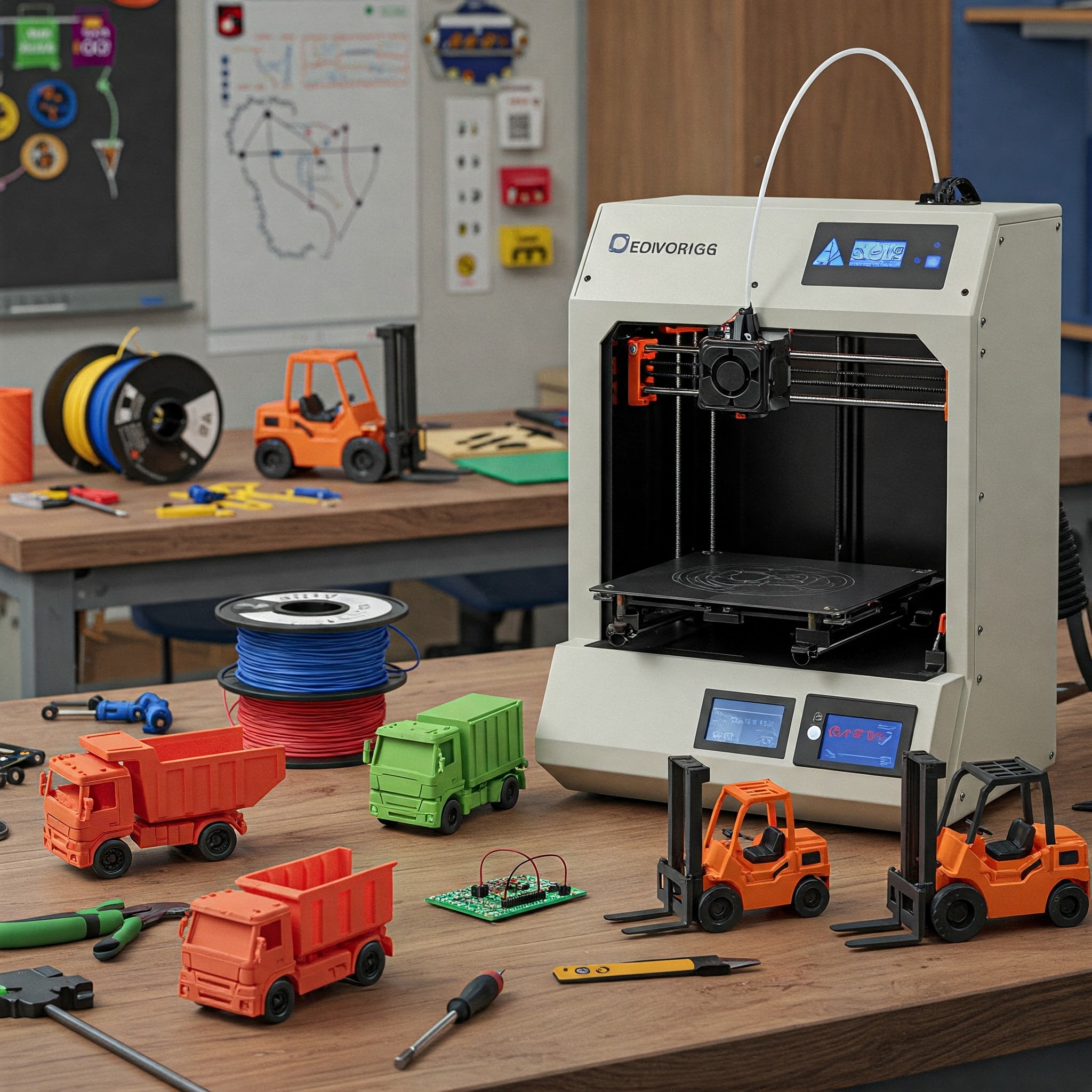
Revolution on the Print Bed: My 3D Printing Journey in the Classroom
Four years ago, I welcomed a 3D printer into my classroom, and since then, my experience has been a rollercoaster of innovation, frustration, and eventual triumph. Back then, I started with a MakerBot Replicator+, a machine that promised a world of creativity but quickly taught me that big dreams on a small, unreliable platform can warp—literally. Large models were a no-go; they’d warp so terribly that even the vast print area felt like a cruel joke.
Fast forward 1.5 years, and fate (or perhaps a well-timed reallocation of resources) handed me a MakerBot Replicator Z18. I was ecstatic—finally, a machine that could, in theory, print larger objects without the constant battle against warping. Yet, reality proved otherwise. The Z18, while an improvement, came with its own set of quirks: it lacked limit switches for finding its “home” position, causing it to grind relentlessly into corners until, somehow, it decided it was home. It felt as if it was perpetually on the edge of self-destruction, and I knew that kind of rough handling would wear the machine out over time. And, despite its heated chamber meant to prevent warping, large models still pushed its limits. Consistency was a myth—print one model successfully, try it again, and sometimes it fails, sometimes due to the STL file, sometimes just because the machine is having an off day. Even the filament—always from MakerBot—was unpredictable. One spool worked flawlessly, the next clogged the nozzle, and sometimes the same spool could be a miracle or a monster without warning.
Then came a game changer: the Bambu P1S, accompanied by its AMS unit. I’d been eyeing a new machine for a while, and with some budget money I had to spend by year-end, I took the plunge. Unpacking the P1S was a breath of fresh air—modern design, intuitive setup, and promising specs. Yet, true to form, it wasn’t without its hiccups. At school, the firewall initially blocked its connection to my computer and phone, forcing me to switch it to LAN-only mode. Sure, I lost remote access, but stability was more important.
Bambu Studio, the software driving the P1S, left me with mixed feelings. I wanted to set a universal filament color for every model on the build plate, especially for those downloaded directly from Bambu. Instead, nothing happened, forcing me to resort to downloading plain STL files from Thingiverse to get the desired results. And when it came to printing, the colors I selected sometimes didn’t show up at all. The user interface could certainly use a polish. Plus, the AMS unit’s purge tower wasted a ridiculous amount of filament—every color swap meant ejecting enough waste to potentially print three extra models. Yet, despite these setbacks, the print quality was noticeably superior. Gone were the days of needing a raft to prevent model failure; now, I could print solid, detailed objects without the prior drama.
What makes this journey even more exciting is the announcement of CyberBrick—an upcoming platform that promises to revolutionize how we build and program in a classroom setting (check out https://makerworld.com/cyberbrick/pre-launch). Imagine a set of devices that not only print but also integrate into a system where students can design, program, and construct interactive projects. For a classroom like mine, that could be nothing short of transformative.
The evolution of these 3D printers mirrors the broader trajectory of technology itself—a journey marked by trial, error, and eventual innovation. While the early models taught me the limits of what was possible, the new machines open doors to creative potential that I once only dreamed about. Sure, there are frustrations and rough edges, but every setback is a lesson. Every misprint and filament clog is a reminder that progress is messy, unpredictable, and ultimately rewarding.
